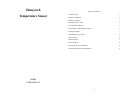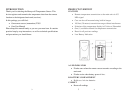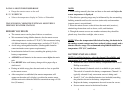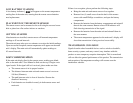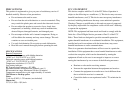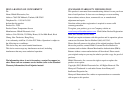
7
7
LOW BATTERY WARNING
A low-battery indicator [ ] will appear on the remote temperature
reading line of the main unit, warning that the remote sensor batteries
need replacement.
PLACEMENT OF THE REMOTE SENSOR
The remote sensor can be mounted on the wall using the recessed screw
hole or placed on a flat surface indoors or outdoors.
GETTING STARTED
After batteries are installed; remote sensor will transmit temperature
readings at 45 second intervals.
The main unit may take up to two minutes to receive the initial readings.
Upon successful reception, remote temperature will appear on the main
unit’s display. The main unit will automatically update readings at
45-second intervals.
LOST COMMUNICATION
If the main unit display line for the remote sensor reading goes blank,
refer to the main unit’s User Manual to find out the way to begin a new
signal search. If the signal still isn’t received, please make sure that:
• The remote sensor is in its proper location.
• The distance between main unit and remote sensor is not over
100 feet (30meters).
• The path between units is clear of obstacles. Shorten the
distance if necessary.
• Fresh batteries are installed correctly in both remote sensor and
main unit.
8
If there is no reception, please perform the following steps:
• Bring the main unit and remote sensor close together.
• Remove four (4) small screws from the back of the remote
sensor with small Phillips screwdriver, and open the battery
compartment.
• Remove the batteries from the battery compartment and reinstall
them in the same manner. Remote sensor LED indicator will
flash showing transmission of the signal.
• Remove the batteries from the main unit and reinstall them in
the same manner.
• The remote temperature appeared on the main unit’s display will
show that transmission is being received successfully.
TRANSMISSION COLLISION
Signals from the other household devices such as wireless doorbells,
home security systems, and entry control, may interfere with this
product or cause temporary reception interruption. This is normal and
will not affect the general performance of the product. The transmission
and reception of the temperature readings will resume once the
interference subsides.



